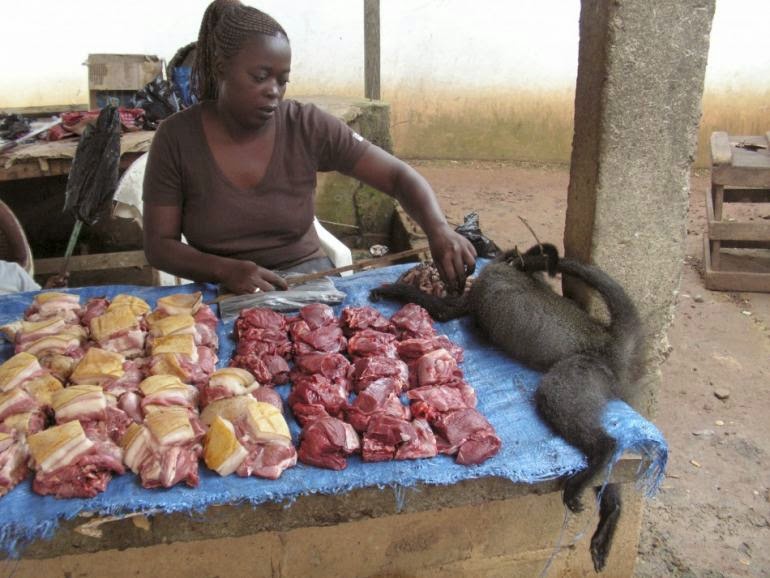NEPAD builds Africa’s capacity for technology, innovation indicators
BY EDMUND SMITH-ASANTEThe New Partnership for Africa’s Development Planning and Coordinating Agency (NEPAD Agency), as part of implementation of the second phase of the African Science, Technology and Innovation Indicators (ASTII) Initiative, will from April 23 to 27 hold a training workshop.
Being organised in collaboration with the South African Department of Science and Technology through the HSRC’s Centre for Science, Technology and Innovation Indicators (CeSTII) and the UNESCO Institute for Statistics (UIS), the workshop will be held at the Southern Sun Newlands Hotel in Cape Town, South Africa.
Participants to the workshop have been drawn from close to 40 African countries and will include experts from Ministries responsible for Science and Technology and National Statistical Offices.
Announcing the workshop through a press release issued April 19 in Johannesburg, the NEPAD Agency said it will focus on training in the production of Science, Technology and Innovation (STI) indicators and will include discussions on policy relevance and implications of STI indicators.
The ASTII Initiative is a flagship programme of the African Science and Technology Consolidated Plan of Action (CPA) and it aims at supporting evidence-based policy that addresses Africa’s development challenges in the context of Science Technology and Innovation (STI).
ASTII’s overall goal is to contribute to improving the quality of STI policies at national, regional and continental levels, by strengthening Africa’s capacity to develop and use STI indicators and the initiative is supported by in-country resources from participating countries and a grant from the Swedish International Development Cooperation Agency (Sida).
NEPAD says this week’s event is a key step towards the release of the second edition of the African Innovation Outlook (AIO). The inaugural AIO was released in Addis Ababa in May 2011.
CeSTII was established to undertake regular national research and development as well as innovation surveys, on behalf of the South African Department of Science and Technology (DST) and to produce national indicators from the survey results to provide inputs for policy makers and a basis for international comparisons.
Its main work is concentrated on building capacity and expertise in science and technology surveys and indicators and in constructing a solid national baseline and data series. CeSTII’s work also extends to a broad collegiate, and dialogues, with researchers and practitioners around the globe. CeSTII works closely with the OECD, science and technology offices in other African countries, the NEPAD Agency, Statistics Canada, UNESCO, and other international agencies.
For its part, the UNESCO Institute for Statistics (UIS), is the statistical branch of the United Nations Educational, Scientific and Cultural Organisation (UNESCO) and produces the data and methodologies to monitor trends at national and international levels. It delivers comparative data for countries at all stages of development to provide a global perspective on education, science and technology, culture, and communication.
Being organised in collaboration with the South African Department of Science and Technology through the HSRC’s Centre for Science, Technology and Innovation Indicators (CeSTII) and the UNESCO Institute for Statistics (UIS), the workshop will be held at the Southern Sun Newlands Hotel in Cape Town, South Africa.
Participants to the workshop have been drawn from close to 40 African countries and will include experts from Ministries responsible for Science and Technology and National Statistical Offices.
Announcing the workshop through a press release issued April 19 in Johannesburg, the NEPAD Agency said it will focus on training in the production of Science, Technology and Innovation (STI) indicators and will include discussions on policy relevance and implications of STI indicators.
The ASTII Initiative is a flagship programme of the African Science and Technology Consolidated Plan of Action (CPA) and it aims at supporting evidence-based policy that addresses Africa’s development challenges in the context of Science Technology and Innovation (STI).
ASTII’s overall goal is to contribute to improving the quality of STI policies at national, regional and continental levels, by strengthening Africa’s capacity to develop and use STI indicators and the initiative is supported by in-country resources from participating countries and a grant from the Swedish International Development Cooperation Agency (Sida).
NEPAD says this week’s event is a key step towards the release of the second edition of the African Innovation Outlook (AIO). The inaugural AIO was released in Addis Ababa in May 2011.
CeSTII was established to undertake regular national research and development as well as innovation surveys, on behalf of the South African Department of Science and Technology (DST) and to produce national indicators from the survey results to provide inputs for policy makers and a basis for international comparisons.
Its main work is concentrated on building capacity and expertise in science and technology surveys and indicators and in constructing a solid national baseline and data series. CeSTII’s work also extends to a broad collegiate, and dialogues, with researchers and practitioners around the globe. CeSTII works closely with the OECD, science and technology offices in other African countries, the NEPAD Agency, Statistics Canada, UNESCO, and other international agencies.
For its part, the UNESCO Institute for Statistics (UIS), is the statistical branch of the United Nations Educational, Scientific and Cultural Organisation (UNESCO) and produces the data and methodologies to monitor trends at national and international levels. It delivers comparative data for countries at all stages of development to provide a global perspective on education, science and technology, culture, and communication.



Comments
Post a Comment